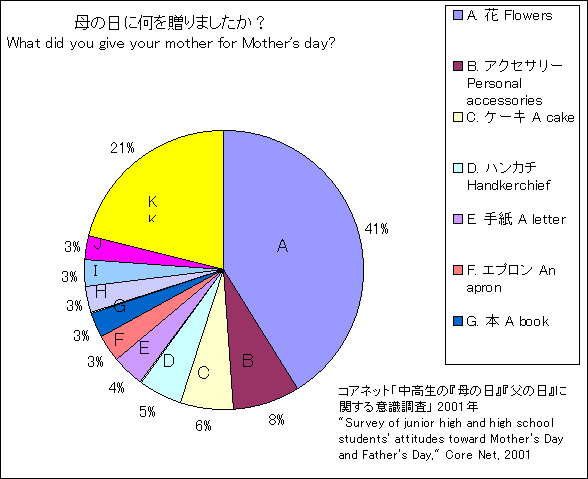Mother's Day
ϧŒ∆¸
§œ§œ§Œ§“
Mother's Day has been celebrated in the United States since 1914, but in Japan it was not officially recognized until after the World War ≠∂ in 1947. Many people give their mothers carnations on this day and the flower shops are full of carnations.
According to a survey by Coanet Internet Service,* roughly half (49 %) of all Japanese junior and senior high school students give a gift to their mother on Mother's Day. Types of gifts in order of popularity are: flowers (41 %), jewelry and accessories (8 %), cakes (6 %), handkerchiefs (5 %), and letters (4 %). Boys are most likely to give flowers (66.7 %), followed by cakes (9.5 %), handkerchiefs (9.5 %), and aprons (9.5 %). Girls give flowers (38.1 %), jewelry and accessories (9.5 %), cakes (7.1 %), handkerchiefs (6 %), letters (4.8 %), and towels (3.6 %). Some help with chores around the house in lieu of a gift (3.6 %). Most spent 500 yen or less on their gift (38.9 %), followed by 500 to 1,000 yen (36.7 %), 2,000 to 5,000 yen (18.9 %), and 1,000 to 1,500 yen (16.7 %). As with Father's Day gifts, older students tend to spend more than younger students.

*Coanet Internet Service, Inc., Chu kokosei no "Haha no hi" "Chichi no hi" ni kansuru ishiki chosa, 2001
|

ok_p07 |
|